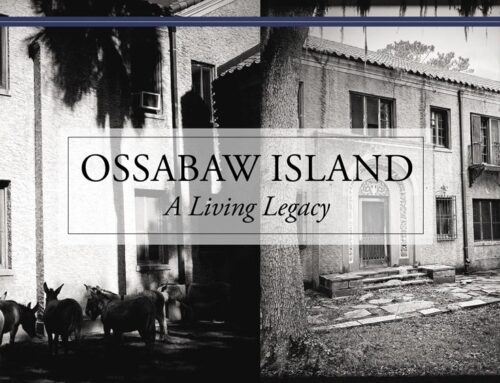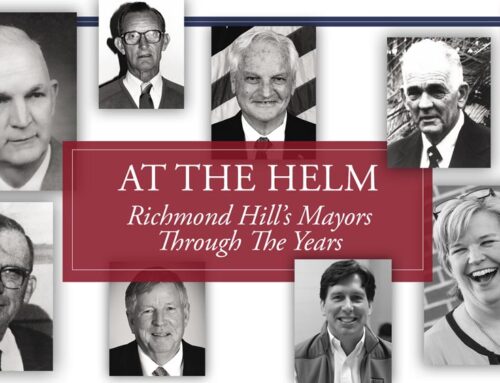Robert “Bobby” Carpenter Park
Written by Beth Odom Photos Contributed by The Carpenter Family and by Reflections
ARCHIVES
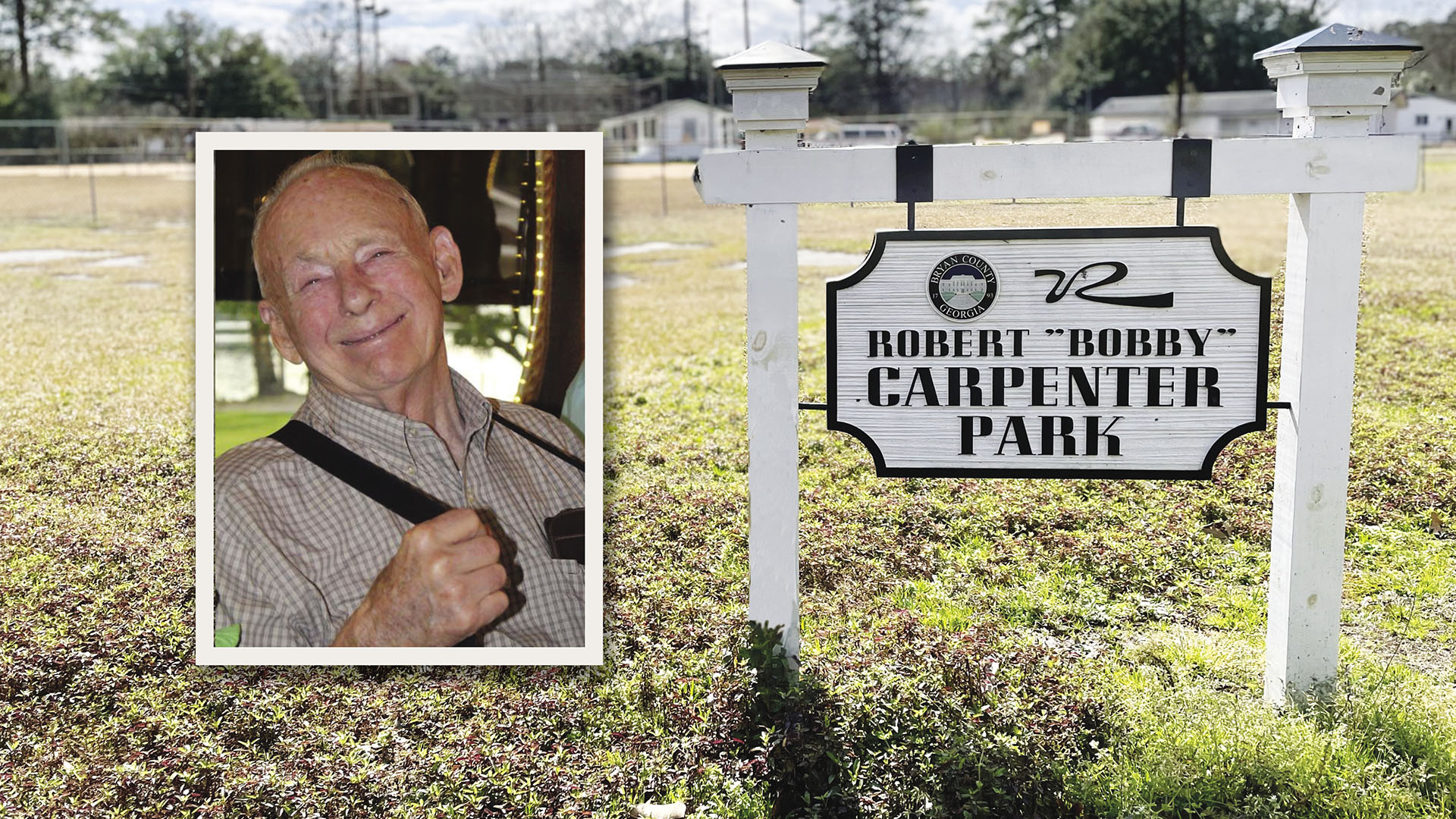
“GO 365. CG 59. TD 155. SD 1. THD 133. JE 221. GH 167. CK 999. BW 144. RB 191. TH 66… and the list goes on and on.”
Some will know what these initials and numbers represent, but for those who do not, these are post office box numbers of long-time residents of Richmond Hill. I simply called out a name and Bobby Carpenter recited their box number. It’s been a long time since he has put a letter in a mailbox, but he still remembers them by heart. This is the story of how the park down the street was named.
Robert Kenneth Carpenter, known to most as Mr. Bobby Carpenter, was born on October 20, 1931 in Keller, Georgia. His birth home was near where the Wildlife Management Area is today. His parents, Addie Pearl and Irwin Walcott Carpenter, reared four children, Harry, Evelyn, Bertie, and Bobby. The children attended Richmond Hill School, Mr. Bobby’s class (1948) had nine boys and nine girls—much different than the class sizes today.
While in high school, Bobby worked at the commissary delivering groceries and cutting meat. After graduation, he went to work in the planer mill that produced flooring where he was responsible for sharpening blades. He was inducted into the Navy in Columbia, South Carolina not too long after, where he began his journey on the train for three days to his new duty station in San Diego, California. His typing ability afforded him a desk job. He claims he wasn’t that fast, but that he was very accurate. He typed job orders at a small desk in a small office.
His ship assignment was on the destroyer, the USS Twining, which took part in trial runs to Hawaii twice, and worked in collaboration with the USS Missouri battleship. Being a very congenial person, Bobby made friends easily with officers on the ships and even went on weekend fishing trips with them. They fished for salmon and sturgeon. As a Petty Officer, Bobby served in the Korean War and when it ended, he returned home. He drew his $100 per month unemployment while hunting and fishing.
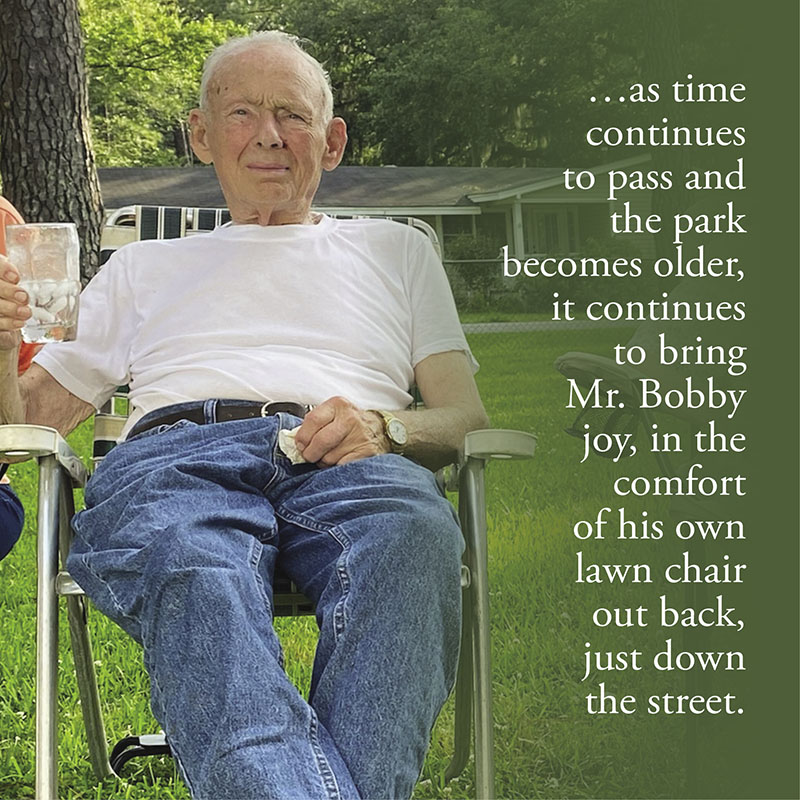
Mr. Bobby had a two-toned ’52 Ford that attracted the attention of Flora Jean Williams (FloJo). On a double-date to a basketball game with Roger and Skee Black, their love story had its beginning, and the rest, as they say, is history. FloJo graduated in May of 1956 and they were wed on Thanksgiving Day that same year. They lived in Savannah for almost a year. Bobby decided to take advantage of the GI Bill and attend Draughon’s Business College in Savannah. He excelled in dictation and typing. The Central of Georgia Railroad called the college seeking someone to fill a position. Bobby would work for them for seven and a half years, until they were bought out. It was the late 50s when The Richmond Hill Land Company had been formed. Bobby and FloJo decided to move back to Richmond Hill to settle and have children. They made moving home official by purchasing a home for $6100. They reside in that very same home today, just a short walk from the little league fields and the park at The Bottom.
The purchase required a $600 down payment. The young couple didn’t have that, but were allowed to pay $60 a month for 10 months before beginning principal reducing payments for the two-bedroom house. They were fortunate enough to have four children; Beverly, Barbara (deceased), Ken, and Russ. Yes, Russ Carpenter, Mayor of Richmond Hill. Barbara was in my first class at Richmond Hill School and was a very special person to me. Mr. Bobby loved to ask me, even to this day, if Barbara caused me any problems in class! I always remind him that she did not, as she slept most of the time. I love and miss her so much. Mr. Bobby and I have remained friends and love to get together at his home. Of course, I always take him an order of fried chicken gizzards from Parkers.
Richmond Hill was a very small town, but it was large enough to have a post office. With the help of Mr. Bobby, Richard Davis, and the Jaycees, The City of Richmond Hill became incorporated in l962. Governor Lester Maddox was the guest speaker at the incorporation ceremony. Mr. Earl Sheppard was the Postmaster. When he passed away in 1964, the Postal Inspector, J.W. Gabbert, administered the postmaster’s test to Mr. Bobby. His score, plus his bonus points for being a veteran, landed him the job. He was installed and received an official commission from President Lyndon Johnson.
200 residents called Richmond Hill home that year. Most lived in neighborhoods you still read about today, Blueberry, The Bottom, Kilkenny, Belfast, and Fancy Hall. Most had a Post Office Box that cost $5 per year. The Post Office was located on the corner of Ford Avenue and Ivey Street, where the Ford Academy sits today, but soon moved to the lot next to the Fire Station on Ford Avenue. Due to the growth, a newer and larger building was planned for Richmond Hill, it is now occupied by Charlie Grangers and Flashbacks. This was Mr. Bobby’s final duty station as Postmaster as he retired in 1990 before the current building was built.
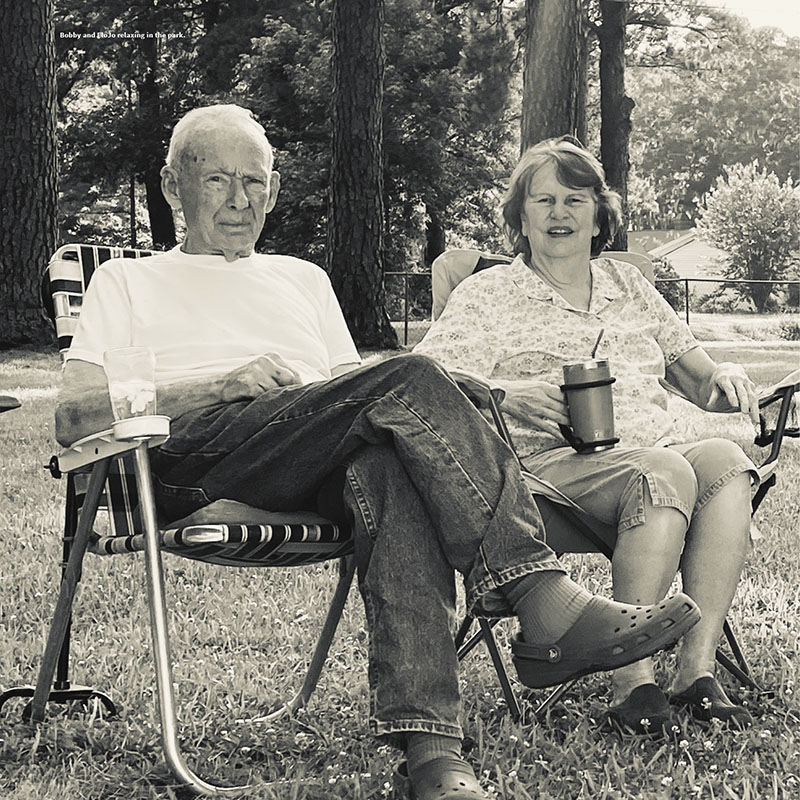
Feeling the call of duty, Bobby began working at the voting polls in l995. He, Theron Darieng, and Jimmy O’Bryan occupied the first table where your application was completed and your ID was checked. It was my pleasure to work this civic duty with these men for many years. We enjoyed listening to all of the tales they had to tell and often had to remind them that the people needed to move on to the next table so they could vote and be on their way. People would laugh and say that they came to see these 3 gentlemen and while they were there, they might as well vote.
In 2019, Councilman Robbie Ward made the motion to honor Mr. Bobby Carpenter with a namesake of his own: The Robert (Bobby) Carpenter Park. They celebrated with another of Mr. Bobby’s favorites, pounds and pounds of crab legs. Growing up, it was where he and his friends played ball and was the only park in Richmond Hill for many years. Since 1957 when he moved to The Bottom, Bobby has been playing with his own children or listening to others enjoy the nostalgic little green park. And as the time continues to pass by and the park becomes older, it continues to bring Mr. Bobby joy, in the comfort of his own lawn chair out back, just down the street.
Mr. Bobby’s health has declined significantly, but even when he’s gone, his presence will always be felt at The Robert (Bobby) Carpenter Park.












